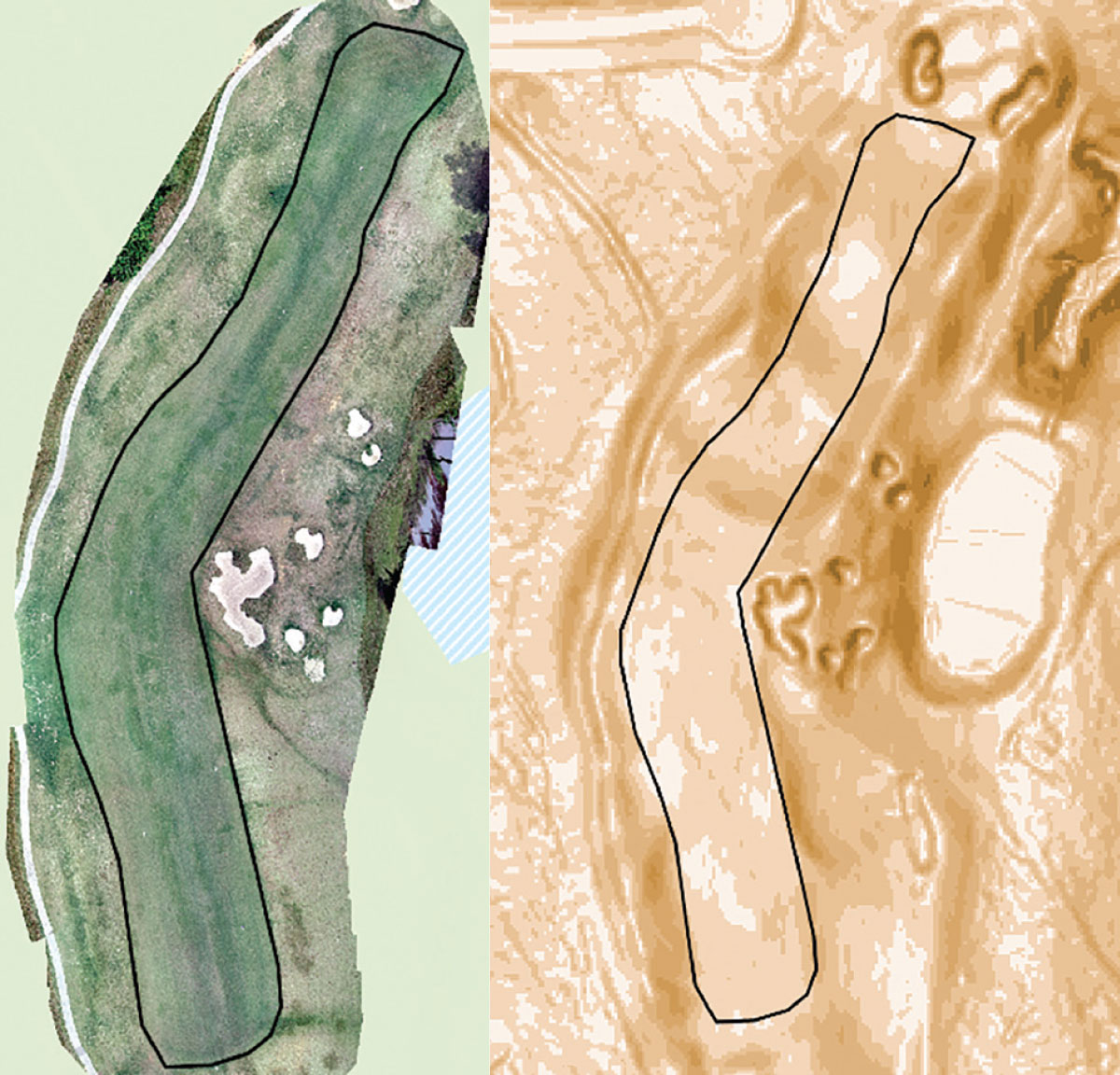
2 minute read
Research Update from VT
Getting the Lay of the Land: How Topography and Related Factors Influence Spring Dead Spot Epidemics
By Caleb Henderson, School of Plant and Environmental Sciences, Virginia Tech, Blacksburg, VA
Spring dead spot (SDS) is a soil borne disease that affects the rhizomes and stolons of bermudagrass and is more severe in areas with extended winter, where the plants go dormant. Information shared amongst turfgrass managers suggests that this disease tends to accumulate on north facing slopes and could also be more severe in low lying areas. Our research aimed to quantify the influence of hills, valleys, slopes and other topographic features as well related environmental factors including annual sunlight on the distribution of spring dead spot throughout golf course fairways. State lidar data was used to create maps and was combined with SDS locations identified from aerial imagery of 16 fairways across three locations throughout the state of Virginia. The slope angle, aspect (compass direction), annual sunlight, and landform shape of each portion of each fairway was calculated using geographic information software, ArcGIS Pro. Locations where SDS was detected were sampled for those factors compared to 1000 random points to act as a baseline for the average for the entirety of the fairway. After analysis we determined that while all of these factors did have a consistent influence on where SDS occurred, when combined they only account for approximately 1.2% of its location. We are currently re-evaluating our analysis but as it stands now, this research suggests that local topography is among a multitude of factors that contribute to SDS epidemics, but that topography, annual sunlight and slope angle, etc. do not completely dictate development.











